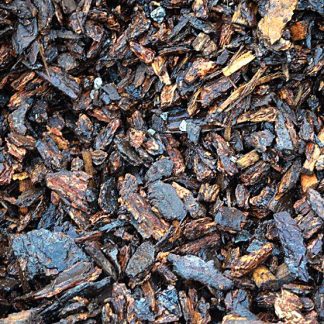Description
Regular Bark Mulch’s composition consists of 70% Douglas Fir and 30% Hemlock. Its pH is on the acidic side and it becomes a darker hue as it decomposes. Though it is not high in nutritional value, it is used as a weed suppressant.
Bark Mulch in general is high in carbon and low in nitrogen. Microbes are what decompose the bark mulch. However, microbes require nitrogen. Planted flowers, trees and shrubs also require nitrogen, and so the plants compete with the microbes for the available nitrogen in the soil. Therefore in the top 3-6 inches of the soil, where there is mulch, the soil may exhibit a nitrogen deficiency. This is because, the microbes are consuming the nitrogen so they survive, and continue to consume (and thus decay) the bark mulch. It should be kept in mind that despite the nitrogen uptake by the microbes, the flowers, trees, and shrubs planted with a top dressing of bark mulch, often grow healthier than those planted by some other means. This is because of the higher fertility of the soil, better balanced moisture content, and better weed competition, all provided by the bark mulch.







